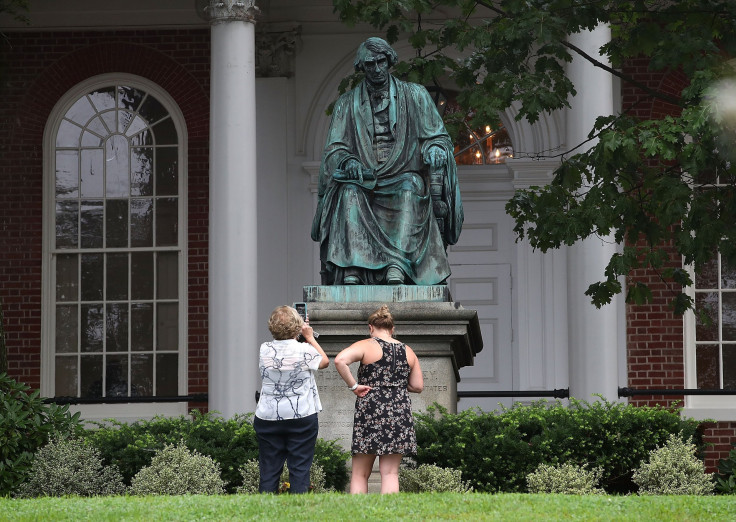Who Was Roger Brooke Taney? Supreme Court Justice's Statue Removed In Maryland

Days after violence erupted during a rally in Charlottesville, Virginia, which revolved around the removal of a statue of Confederate Gen. Robert E. Lee from a park in the city, Maryland Gov. Larry Hogan removed a statue of Supreme Court Justice Roger B. Taney outside the State House. The statue was removed Friday midnight, reports said.
Violence at the "Unite the Right" rally prompted Hogan to push for the removal of a 145-year-old statue of Taney who was a Maryland native. Taney had written the 1857 decision in Dred Scott v Sandford which defended slavery. The ruling also said that blacks, whether slaves or not, could never be U.S. citizens, according to the website of American National Biography Online.
On Wednesday, the State House Trust announced it would remove Taney's statue from the State House grounds in Annapolis. “While we cannot hide from our history — nor should we — the time has come to make clear the difference between properly acknowledging our past and glorifying the darkest chapters of our history,” Hogan said in a statement, reported by multiple media outlets.
“I believe removing the Justice Roger B. Taney statue from the State House grounds is the right thing to do,” he added.
Hogan's decision to remove the statue is a reversal from the last year's announcement when he said he had “no interest” in removing Taney’s statue. Hogan also referred to the removal of statues and other Confederate monuments as “political correctness run amok," the Washington Post reported.
On Friday, just before 2 a.m. EDT, the Taney statue was slowly lifted from its base, placed onto a flatbed truck and was wrapped. The statute will be shifted to a Maryland State Archives storage facility, according to an email outlining the operation obtained by the Baltimore Sun.
Packed up and trucked away: The Roger Taney statue in Annapolis has been removed from the State House Grounds >> https://t.co/ODubLUpqGO pic.twitter.com/LKQB5Dap7a
— WBAL-TV 11 Baltimore (@wbaltv11) August 18, 2017
Taney was born in Calvert County, Maryland, into a family operating a tobacco plantation. His family also owned multiple slaves. He graduated from the Dickinson College in 1795. In 1799, he was admitted to the Maryland bar after which he began to practice in his native county, according to the website of United States History.
In January 1837, Taney took his seat on the Supreme Court Bench and earned recognition for his decision in the case of Dred Scott. Scott was a slave and had lived in the free state of Illinois and the free territory of Wisconsin before shifting to Missouri.
Slavery in the U.S. became one of the key social and economic institutions and began with the arrival of "20 and odd" enslaved Africans to Virginia in 1619. It ended with the ratification of the Thirteenth Amendment in 1865.
After shifting to Missouri, Scott had appealed to the Supreme Court for being granted freedom. However, Taney, who was a staunch supporter of slavery, wrote in the Court's majority opinion that because Scott was black, he was not considered as a U.S. citizen and hence, he had no right to sue, according to American National Biography Online.
© Copyright IBTimes 2024. All rights reserved.






















